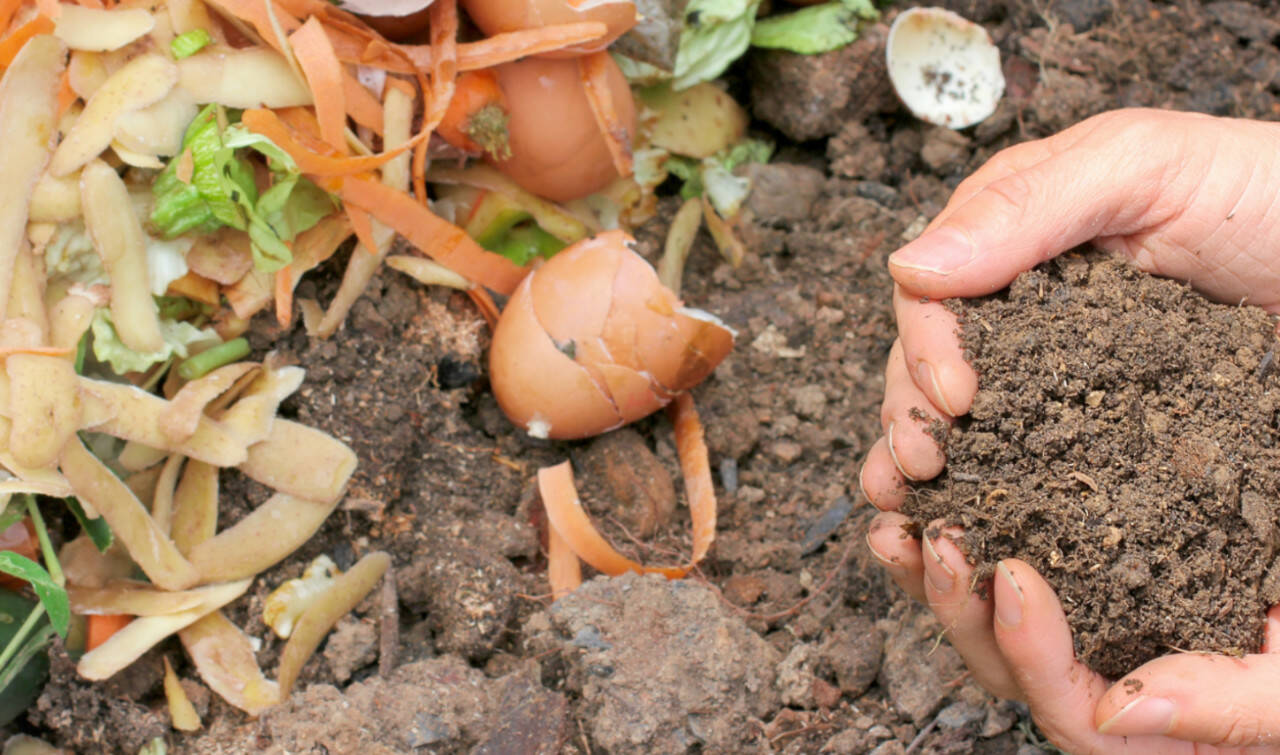By The Herald Editorial Board
The thing about a problem with double the unwanted impacts is that it also can offer twice the solutions when addressed.
That’s what we face with the food waste that goes into our landfills.
Not only are food waste and other organic material overloading landfills, releasing methane into the atmosphere and contributing significantly to climate change, the food that is dumped or sent down the drain — much of it edible and nutritious — represents a wasted opportunity to feed those threatened by hunger.
The Herald’s Julie Titone in a report Sunday outlined the opportunities and the complexities of a new state law that intends to limit the food waste and organic material going into landfills, and at the same time encourage more use of food for the purpose intended: fueling our bodies.
A recent survey of what state residents send into landfills found that nearly one-fourth — 23 percent — is food waste and other organic material, more than plastic (13 percent) and metal (7.5 percent) combined. Nationwide, that figure is as high as 40 percent and represents some $200 billion a year going to waste in landfills.
Meanwhile, more than 638,000 Washington residents face food insecurity — 72,500 in Snohomish County — according to figures from Feeding America, about 8.5 percent of the population; nationwide more than 38 million are considered food insecure, nearly 12 percent of the population.
And what’s not going on plates and instead ending up in landfills is adding more fuel to climate change from methane. Methane breaks down more quickly in the atmosphere, about 10 years compared to carbon dioxide’s hundreds to thousands of years, but while it’s up there it’s up to 80 times more efficient at warming the atmosphere than carbon dioxide and is responsible for about 30 percent of the global warming since pre-industrial times, according to the United Nations Environment Program.
The state’s Organics Management Law aims to reduce food waste to landfills by 20 percent by 2025, and all organic material by 75 percent by 2030, diverting more to composting.
Although organic material decomposes whether it’s composted or moldering in a landfill, composting limits greenhouse gases because the carbon is sequestered in the soil and methane emissions are prevented by composting’s aerobic (oxygen-dependent) decomposition, according to the U.S. Environmental Protection Agency.
Now at the rule-making stage, the new law’s implementation and coordination lie ahead for state agencies including the departments of Ecology, Agriculture, Enterprises Services and the Conservation Commission as well as local governments.
One aspect of the new law is the Good Samaritan Food Donation Law, which is meant to make donations easier for businesses, such as stores and restaurants, by releasing them from liability. As well the law preserves a tax donation by allowing for the discounted sale of prepared or packaged food to food donation distributors.
Joining the state law is a federal law signed by President Biden earlier this month, the Food Donation Improvement Act, which also eases liability rules so that qualified private donors that already have safety checks in place aren’t held legally responsible for food quality or spoilage, as reported by Bloomberg Opinion’s Amanda Little last week.
But more legislation seeks passage in Congress, Little wrote, including the Food Date Labeling Act, which would standardize laws on expiration dates; and the Zero Food Waste Act.
An example of the waste that occurs: Studies have shown milk retains its freshness for at least 28 days, yet laws on milk vary widely by state. Where Washington state sets a “sell by” pull-date for milk, dairy products and eggs of 30 days, Montana sets the sell-by date at just 12 days, requiring grocers to dump relatively fresh milk and forbidding them from donating it to food banks or other nutrition programs.
The Zero Food Waste Act would encourage state and local policies to restrict food from landfills, as Washington’s law does, and would fund infrastructure for food donations to nonprofit hunger programs with storage and distribution networks.
But state and federal efforts can’t always match what consumers can already do; or as quickly. A lot of the food waste we now generate can still be consumed or donated to food banks or, composted when spoiled, rather than sent to landfills.
Some tips to limit what you toss in the kitchen garbage:
Know what the “expiration” dates on food packaging mean. Washington State University’s Extension office decodes those food dates, lining the differences between “sell by,” “best by” and “don’t use after” labels. “Sell by” dates generally are used on dairy products and lunch meat and allow about a week of use past the printed date. Quality assurance dates used on packaged food indicate optimal quality, but will remain safe after the date given. Expiration dates, used on infant formula, baby food, vitamins and over-the-counter drugs, should be closely followed as ingredients may not function in the body as intended after the printed date.
If your refuse hauler offers green-waste collection, sign up and use the bins.
Those with a need for compost in home gardens can easily use a small compost bin that effectively converts food waste into usable, fertile soil.
Plan ahead for meals before shopping and take care with storage of food. Wait to wash produce until you’re ready to use it and remove produce from plastic bags that can speed up the process of decay.
Cook more sustainably by using more of the food you buy, such as slicing up broccoli stems rather than throwing them away, or using the carcass of a rotisserie chicken to make stock for soup or other recipes.
And, as helpful as it is to donate canned goods and packaged foods to food banks, it’s best to donate money so those organizations can buy more perishable food when it’s most needed, helping them avoid wasting food themselves.
Talk to us
> Give us your news tips.
> Send us a letter to the editor.
> More Herald contact information.

























